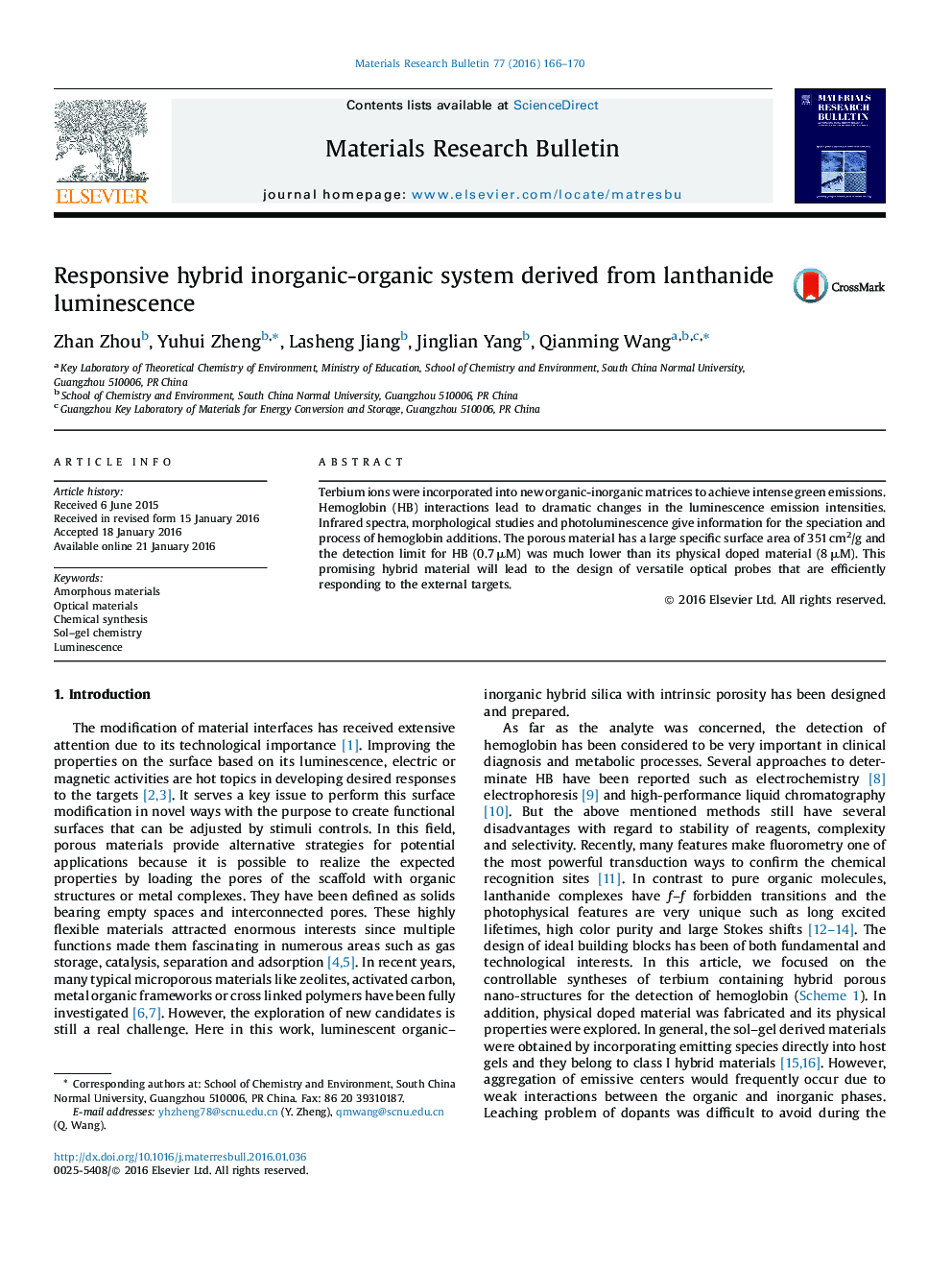| Article ID | Journal | Published Year | Pages | File Type |
|---|---|---|---|---|
| 1487442 | Materials Research Bulletin | 2016 | 5 Pages |
•A novel covalent hybrid material was used to detect hemoglobin.•All the recognition experiments were performed in buffer solution.•Porous nano-structures was extensively studied for the recognition.
Terbium ions were incorporated into new organic-inorganic matrices to achieve intense green emissions. Hemoglobin (HB) interactions lead to dramatic changes in the luminescence emission intensities. Infrared spectra, morphological studies and photoluminescence give information for the speciation and process of hemoglobin additions. The porous material has a large specific surface area of 351 cm2/g and the detection limit for HB (0.7 μM) was much lower than its physical doped material (8 μM). This promising hybrid material will lead to the design of versatile optical probes that are efficiently responding to the external targets.
Graphical abstractFigure optionsDownload full-size imageDownload as PowerPoint slide
